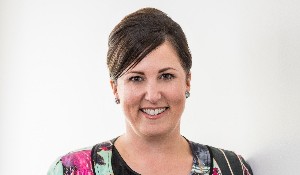Fidelity: Profit down as claims up
An increase in claims is partly to blame for a drop in Fidelity Life’s annual profit, the insurer says.
Tuesday, October 22nd 2019, 9:22PM

It has reported underlying profit of $13.6 million for the 2019 financial year, down from $19.2 million last year.
It said that was in part due to a 17% increase in gross claims, restructuring costs and the insurer’s response to the Financial Markets Authority and Reserve Bank review into life insurers’ conduct and culture.
Chief executive Nadine Tereora said the rate of claims was increasing as policyholders got older and cancer and mental illness became more prevalent.
It accepted 91% of all claims in the year. The rate of accepted income protection claims was up 21% over 2018.
“We’re in the business of paying claims and I’m immensely proud we’ve been able to help our customers and their families when they need us,” Tereora said.
“We achieved a significant customer milestone at the end of the 2019 financial year: not only did we pay $125.7 million in claims, we’ve now paid out a cumulative $1 billion in claims since we were founded in 1973.”
There was an $8.2 million (before tax) uplift in net premium revenue to $150.3 million, a strong focus on operating expenses and favourable movements in interest rates.
Chairman Brian Blake said the market was highly competitive "with life insurers continuing to enhance products and sharpen pricing. Against this backdrop the company defended its number three in-force market position and produced a satisfactory financial performance."
Tereora said Fidelity Life was increasing its support for financial advisers.
“We’ve developed some outstanding professional development capabilities and resources to help advisers make the transition to the new regime, with our Building Better Businesses programme the flagship. The aim is to ensure advisers have sustainable businesses, and ultimately work in partnership with us to deliver good outcomes for Kiwis.”
She said the results showed the company was in good shape as it embraced unprecedented regulatory and technology changes and built for the future.
“We’re investing in a platform for future growth built around our customers. Our goal is to set the business up for a sustainable and successful future, with our customers at the heart of everything we do. While there’s plenty more work to do, I’m proud of what we’ve achieved so far on our transformation journey.”
Blake said it would be important to transform the company for the future.
It is investing in its brand and digital capabilities.
“The consequences of not adapting quickly to regulatory, consumer and technology change will be severe. But if there’s one thing we’re certain of, it’s that slow, incremental change isn’t enough. When it comes to digital transformation, we’re starting from a relatively low base; like many other life insurers we’re dealing with complex issues relating to our legacy IT systems.
“However we’re now starting to build towards world-class digital capability. In modernising our technology our aim is to drive innovation, productivity and improved support for our advisers and partners, and deliver flexible products and good outcomes for our customers.”
Fidelity Life had 11.4% of in-force business in the year, and 300,000 customers.
It had seven staff earning more than $280,000 including one – assumed to be Tereroa, on between $590,000 and $600,000.
| « Advisers should pass level five with few problems: Hill | Profit drop for nib » |
Special Offers
Comments from our readers
No comments yet
Sign In to add your comment
| Printable version | Email to a friend |



